Utilizing real-time data, hyper personalization will take marketing to the next level. It's a new norm that enables businesses to engage with users on a deeper level.
Hyper personalization is said to be the future of marketing. In fact, it’s already here.
Almost everyone knows the frustrations of receiving irrelevant advertisements when browsing the internet. You’ve probably been a victim yourself.
In fact, over 75% of online shoppers feel the same way.
Unfortunately, this has been an issue for the longest time, with websites pushing irrelevant content down their customers’ throats.
The result? Driving visitors to other websites.
When 80% of shoppers are more inclined to purchase from companies that offer customer personalization experiences, eCommerce brands must take note. Hyper personalization is now the biggest buzz term in marketing. Today’s customers expect businesses to understand their wants and needs.
They expect more than just relevant advertisements; they want personalized experiences. Here’s where personalization in marketing plays a critical role.
Whether you’re an online store or a physical store, you must implement hyper personalization to keep up and ahead of the competition.
Most of the leading eCommerce have already reacted to this new marketing trend by creating truly hyper personalized experiences for their customers.
What is Hyper Personalization?
Hyper personalization in marketing is the combination of real-time and behavioral data extracted from multiple touchpoints and channels. Brands use this data to create extremely personalized marketing strategies for their customers.
Customer personalization allows brands to tailor their products/services and advertising to each customer for maximum relevancy and conversion potential.
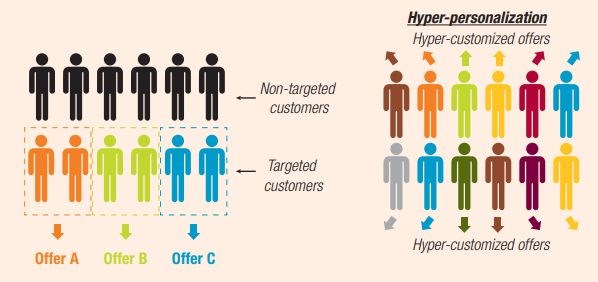
If you can get personalization in marketing right, you’re virtually invincible to your competition.
Put simply. Hyper personalization is a marketing strategy that leverages AI and other third-party real-time data sources to improve your brand messaging with relevant and context-sensitive information.
Almost all companies personalize emails using their customers’ names. However, they could hyper personalize these emails by dynamically changing their content, depending on each email’s receiver’s past purchase history and even physical location.
eCommerce companies have also been known to hyper personalize ads with CRM data and enhanced in-store experiences.
Here’s where you can see the difference between personalization vs hyper personalization.
Let’s put this into context for your better understanding.
Hyper personalization is a one-to-one marketing strategy that uses artificial intelligence and real-time data to display customer specially curated products/services and other content with a high level of granularity and usually in an automated fashion.
Ultimately, customers want to be treated as unique individuals. Therefore, businesses must invest in providing tailored and contextual messaging for each customer individually.
Context gives meaning to crafting a finely tuned, hyper personalized customer experience for each customer. For this, you’ll need a tailor-made plan that interprets contextual data, such as the device type customers’ use.
You will also need the device’s location and times of high activity to develop an even more effective plan. Then comes real-time data like price points or earlier interactions with your brand. These tailor-made plans will further increase your customer personalization experience.
Differences in Personalization Vs Hyper Personalization
As hinted earlier, Hyper personalization is basically personalization on steroids. Think of it as personalization on the next level. It leverages advanced technologies like machine learning, artificial intelligence, and IoT-enabled devices to provide customers with more relevant advertisement offers and shopping experiences.
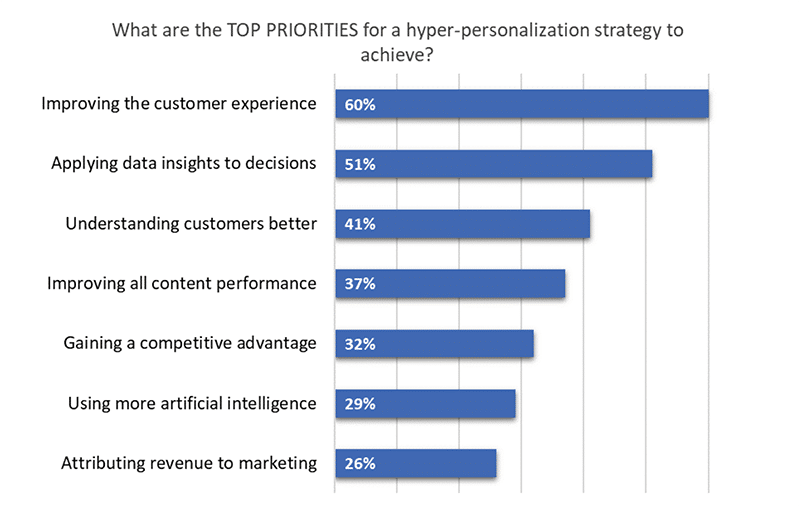
While traditional personalization may include the advertising and collection of a customer’s name, purchase history, or location, hyper personalization considers their browsing, purchasing history, and other real-time behavioral online histories.
Businesses use hyper personalized data to hone in on what their customers want or need. Therefore, it’s a more evolved and complex experience, especially when compared to traditional personalization.
Hyper personalization goes beyond the basic customer data, which makes it a more targeted marketing approach.
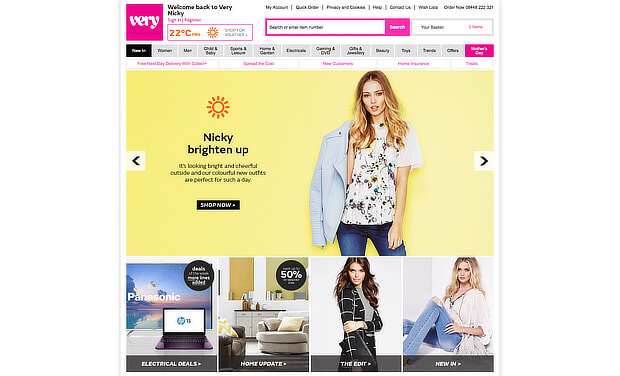
A good personalized marketing approach is shown above. The website displays apparel according to the current weather together with the user’s name.
On the other hand, hyper personalization could include advertising that same winter gear but with more optimized ads based on the customer’s exact purchase location, time, payment method, social media activity, coupons used, and more.
With all this additional data taken into account, you’ll find that the hyper personalization marketing campaign is more relevant and lead-generating than the traditional personalization campaign.
With traditional personalization, your focus lies mostly on personal and transactional data. This can be the customer’s name, purchase history, and organization. A typical conventional personalization example is when an online business sends you an email with your first name in the subject line.
That’s where hyper personalization in marketing becomes more dominant and relevant.
How Can Marketers Use Hyper Personalization?
The shift to move towards more personalized and targeted shopping experiences is largely the result of advancements in marketing technology. Artificial intelligence, machine learning, and biometric identification are increasingly becoming more integrated with each other.
This merger has led to businesses delivering more customized promotional opportunities to customers.
Ideally, there are 6 main components marketers must consider when incorporating customer personalization in their marketing strategy.
These include:
1. Know Your Customers and How to Help
Generally, there are two options involved with regard to hyper personalization marketing.
- Recognize me
- Help me
“Recognize me” utilizes data that shows you who the buyer is. This can be in the form of tailored imagery and content. It can also be in the form of a welcome note to the customer by welcoming them to your website by name.
It’s the first step to establishing trust and the need for more engagement with your brand and products/services.
“Help me” uses the data collected to make the buyer’s journey easier and faster. It’s meant more to reassure the buyer with proof-points that help relieve anxiety when they’re about to make a purchase. This marketing strategy also directs the buyer to the right page to solve their specific problems.
Customer personalization has always revolved around targeting customers with relevant messaging and advertisements. This is still the key principle with hyper personalization. Big data and AI now make it possible for big brands to target customers with highly specific and targeted messages.
Today, brands can even predict which offers customers are more likely to respond to as they progress along the buyer journey.
This is probably the most compelling hyper personalization aspect for marketers who can now build an entire customer experience that revolves around their personal interactions.
Businesses now have the tools and resources to make personalized messages that end users find genuinely valuable.
By recreating these environments, brands increase their customer engagement between purchases exponentially. Customers also become more receptive to targeted messages brands send.
2. Enhance Data Collection Skills
Before you venture into anything to do with hyper personalization, you must first collect the right customer data. Remember, your personalization efforts will only be as good as the quality of data you collect.

As such, the better your customer data, the more segmentation you’ll have, and the more personalized your offers will be. Collecting the right customer data also ensures that the right eyes will receive your personalized messages. These customers will be more likely to purchase from your brand.
It’s best to use an automated system when collecting data. AI and big data play a critical role in analyzing your targeted audience’s internet movements and focusing on behavioral and purchase trends.
3. Work on Customized Offers
Over 79% of consumers say that they will likely engage with brand offers if they are directly tied to previous interactions with that brand. Website segments like ‘recently viewed items’ or ‘recently bought products’ are the best examples in this case.

As such, it’s always best to start with a simple personalized note. This can be your customer’s age or gender. Then slowly add more segments based on customers that consistently buy certain products or when they buy them.
For example, you may have a group of repeat customers who buy your products around March and September. It’s the perfect customer base to start sending hyper personalized messages tailored to their previous purchase patterns.
Again, AI and big data play a massive role when it comes to making hyper personalized recommendations.
4. Relevant & Personalized Messaging
You can now find advanced personalized marketing software to help you draft the most appropriate and targeted messaging. This is an ideal strategy for businesses aiming to send contextualized emails, including:
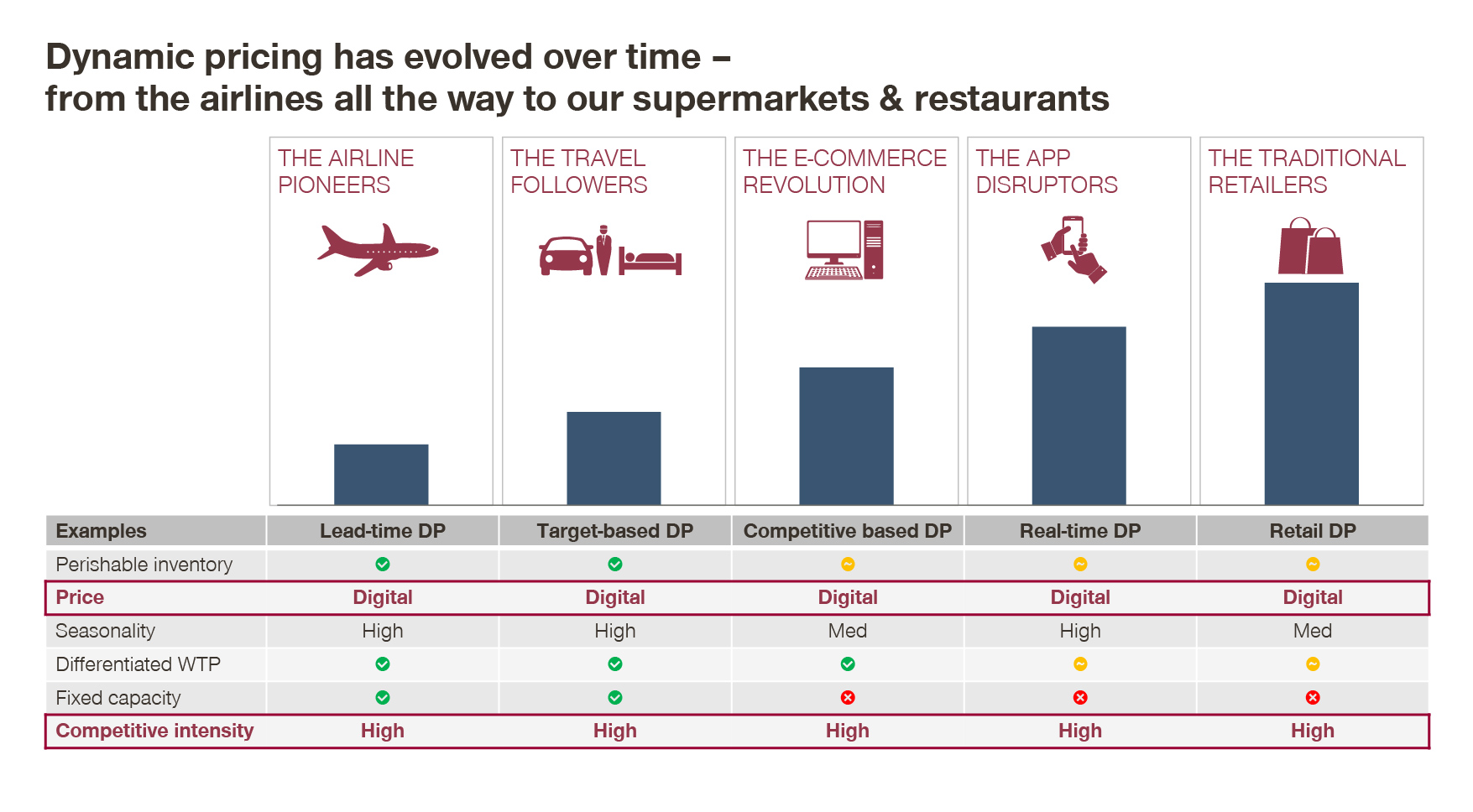
Ever noticed how airline pricing changes every now and then?
- Real-time pricing
- Content that changes depending on when and where the email is opened
- Products that a customer browsed previously
- Dynamically changing SKUs when products go out of stock
Attempting to analyze these processes can be difficult due to the mountains of data you’ll have to sift through and messages to create. Here’s where an automated program comes in handy.
Additionally, you can use an automated marketing platform like BiQ Cloud to help you draft more personalized messaging to your customers.
BiQ Content Intelligence is the perfect tool to provide you with the best SEO-friendly content-driven strategies to get the right message to your customers.
You’ll never have to second-guess the relevance levels of your content messaging again. BiQ’s Content Intelligence has a real-time text editor that will ensure you draft personalized A-grade content for each customer. It’s the best cloud-based tool to ensure you get the right message to the right customer.
5. Make Use of Different Channels
Hyper personalization in marketing involves using different marketing channels to collect and analyze the vast amount of consumer data. Multichannel marketing helps take hyper personalization even further by helping businesses create more personalized one-on-one relationships with their customers.

Websites, social media, emails, and smartphones all offer different customization and personalization levels that brands can use to improve customer personalization efforts.
6. Consistent Analysis
Multivariate testing has proved to be one of the best strategies to make identifying compelling elements of advertisement and messaging considerably easier.
Beyond the simple A/B testing that most businesses already do, you can also gauge the effectiveness of implementing several customer personalization elements at once. This allows you to test the combined effect of using hyper personalization elements in headlines, copy, images, etc., thereby allowing you to determine combinations that perform best.
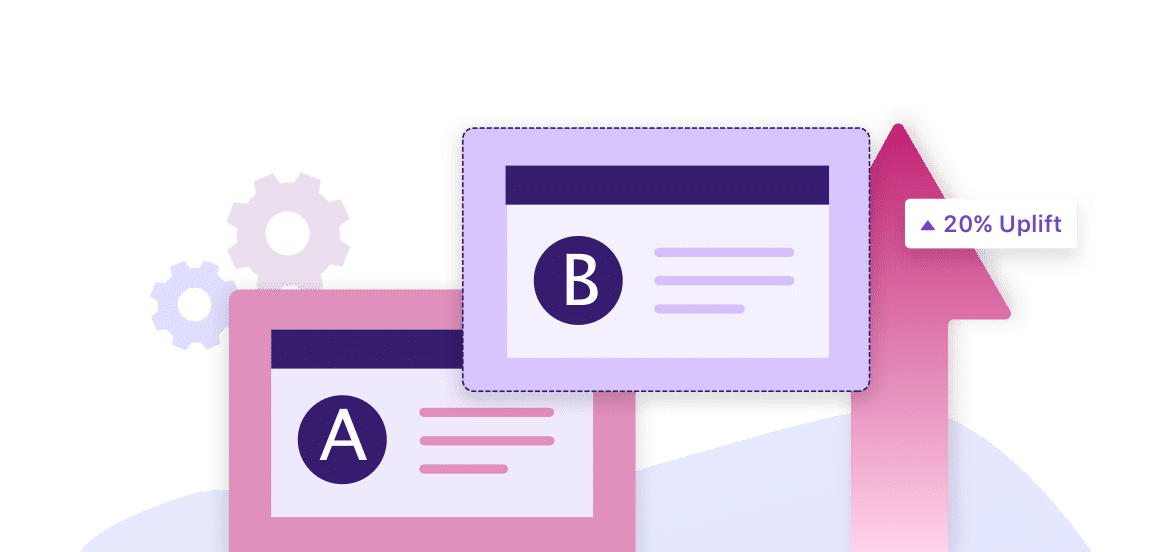
Data drives decisions. Therefore, the more you can collect, analyze, and use in your marketing efforts, the more targeted and effective they will be.
As such, it’s always important that you measure the results of your customer personalization campaigns and hyper personalized campaigns to determine what results they yield. Using this data, you’ll be better placed to send even more accurate and targeted messages, thereby increasing your customer engagement and lead-generation.
The secret lies in finding new ways to measure and manage your hyper personalized efforts and use this data to improve your marketing strategy.
Examples of Hyper Personalization Used in Big Names
Today, top brands like Amazon, Starbucks, Spotify, and Netflix have transformed their marketing campaigns to the stage of predictive personalization. Here’s where AI and machine learning analyze several factors to provide users with hyper personalized recommendations.
Big-name companies have powerful recommendation engines that venture beyond segmentation.
Here are a few examples of how big names have achieved monumental growth trajectories with hyper personalization:
1. Starbucks
Starbucks used AI and real-time data to send over 400,000 hyper personalized messages to its users. Every offer was unique to each customer’s preferences based on their past activity using the app.

The effects of this strategy saw the company’s engagement levels skyrocket. Each customer received a marketing message he/she could relate to, making it easier for Starbucks to make sales.
2. Spotify
Spotify’s Discover Weekly feature is another excellent example of hyper personalization.

This feature would consider all your individual music choices, cross-analyze them with your preferences to other users who listened to similar songs, then create highly-personalized playlists for each user.
Talk about going the extra mile.
3. Netflix
Basically, everyone who has an IoT-enabled device has heard of Netflix.
Did you know that over 75% of this online media streaming giant’s activity is driven by a personalization engine?
Netflix’s personalization engine works right from the homepage.
Here’s a great example:
“Because you watched London Spy…”
Its AI-driven engine analyzes your viewing history and streaming trends to predict and recommend customer personalized content.

This is another classic example of true hyper personalization marketing from Netflix..
Conclusion
Customer expectations have changed tremendously since the inception of the internet and technological advancements in marketing. Companies are consistently providing hyper personalized data with meaningful experiences that have proved to be the most successful.
Hyper personalization is an interactive process that involves structured implementation, digital transformation, and, more importantly, access to first-party data. It’s the foundation for providing personal and emotionally intelligent marketing.
It’s time brands moved from personalization to hyper personalization. Don’t get left behind!




